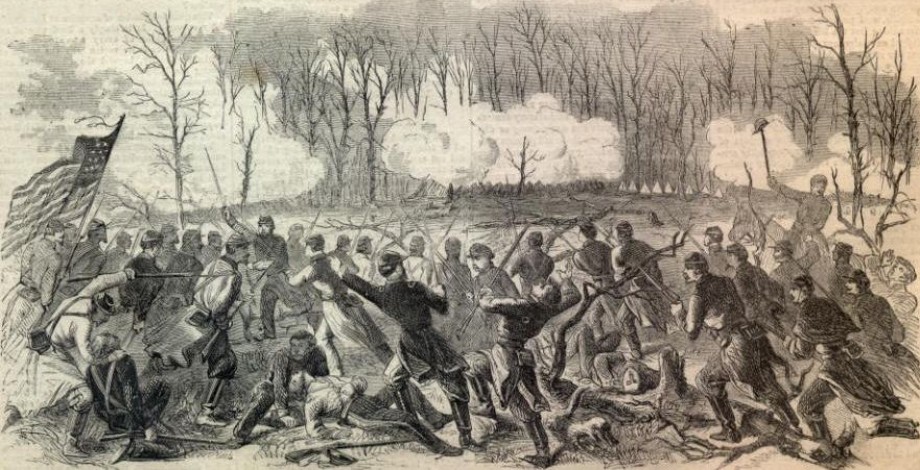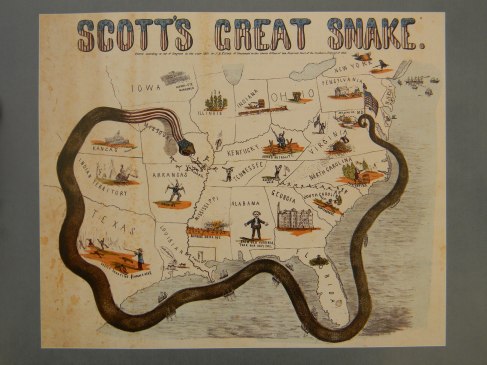Cairo [pronounced locally as “Kay-roh”], at the southern-most point of Illinois, was one of the key strategic locations for the first two years of the Civil War.
A muddy and rough riverport, Cairo lay at the junction of the Mississippi and Ohio Rivers, and potentially held the key to entering the Western Confederacy by water… up (or down) the Ohio and then into Kentucky and Tennessee by way of the Cumberland and Tennessee Rivers. It was also a key rail junction, the southern terminus of the Illinois Central Railroad.
From the earliest days of the war, its military value had been clear and it had been garrisoned and fortified, first by the Illinois militia (rushed down on the Illinois Central), and later by an astounding assortment of Army and Navy forces based at “Fort Defiance” under Brigadier General U.S. Grant (commander of the District of Cairo).
By late 1861, the early Illinois troops would be joined by thousands more, and a fleet of ironclad river gunboats constructed by engineering genius James B. Eads. There the Federals engaged in a stand-off, and light sparring, with a Confederate army under General Leonidas Polk. In early ’62, Grant’s amphibious host, swollen by a fleet of transport steamers from St. Louis, would ascend the Ohio to begin the successful attacks on Forts Henry and Donelson, which would crack open the defense-line of the Western Confederacy and flank Polk out of his defenses.
The map is an extraordinary one. 19th Century maps can be artistic as well as informative, and this wonderful piece more than most. In the 1850s and 60s illustrator John Bachmann created a number of astonishing “Bird’s Eye” depictions of towns and regions, and here he gives the junction of the two mighty rivers his unique treatment. He defies convention by putting south at the top of the image, with the Mississippi entering from the bottom right, and the Ohio from the bottom left, to converge at Cairo, and them ascend south up (!) past Memphis towards the far off Gulf of Mexico.
Bachmann gives us a busy mix of the natural and man-made with streams, bluffs, swamps and groves, dotted with named towns and criss-crossed with road, rail, and bridges. Steamers ply the waters and Tennessee and the Cumberland…targets of Grant’s invasion in a year’s time… reach off to the left from either side of Smithland, KY.
Levee-bound Cairo is in the center foreground, with its shipyard suburb or Mound City, destined to be the headquarters of the Western Gunboat Flotilla (later the Mississippi River Squadron). Just south of Cairo is (on the left) Columbus, KY and around a short bend (to the right) Island No 10 and New Madrid, MO. All would be occupied by the Confederacy, and Columbus’ towering heights would be fortified by the CSA as the “Gibraltar of the West”. This vaunted outpost was destined to be flanked by Grant in February, 1862 and abandoned without a fight.
All that is in the future here though. Bachmann shows us Cairo and the great confluence, in the last moments of peace in 1861. He also shows us all of the terrain…human, terrestrial, and riverine…which would define the War in the West in the crucial early months of 1862.







Recent Comments